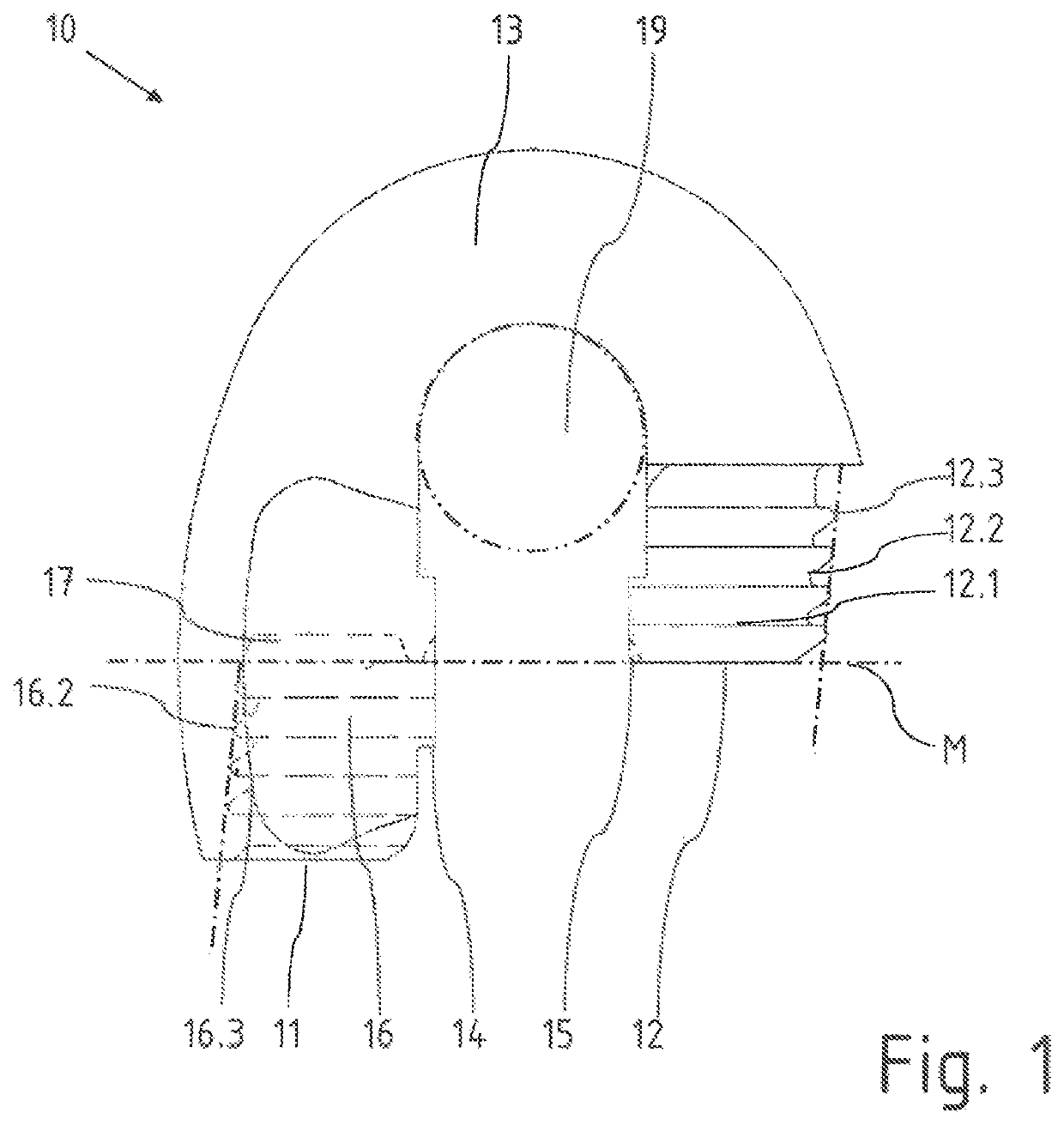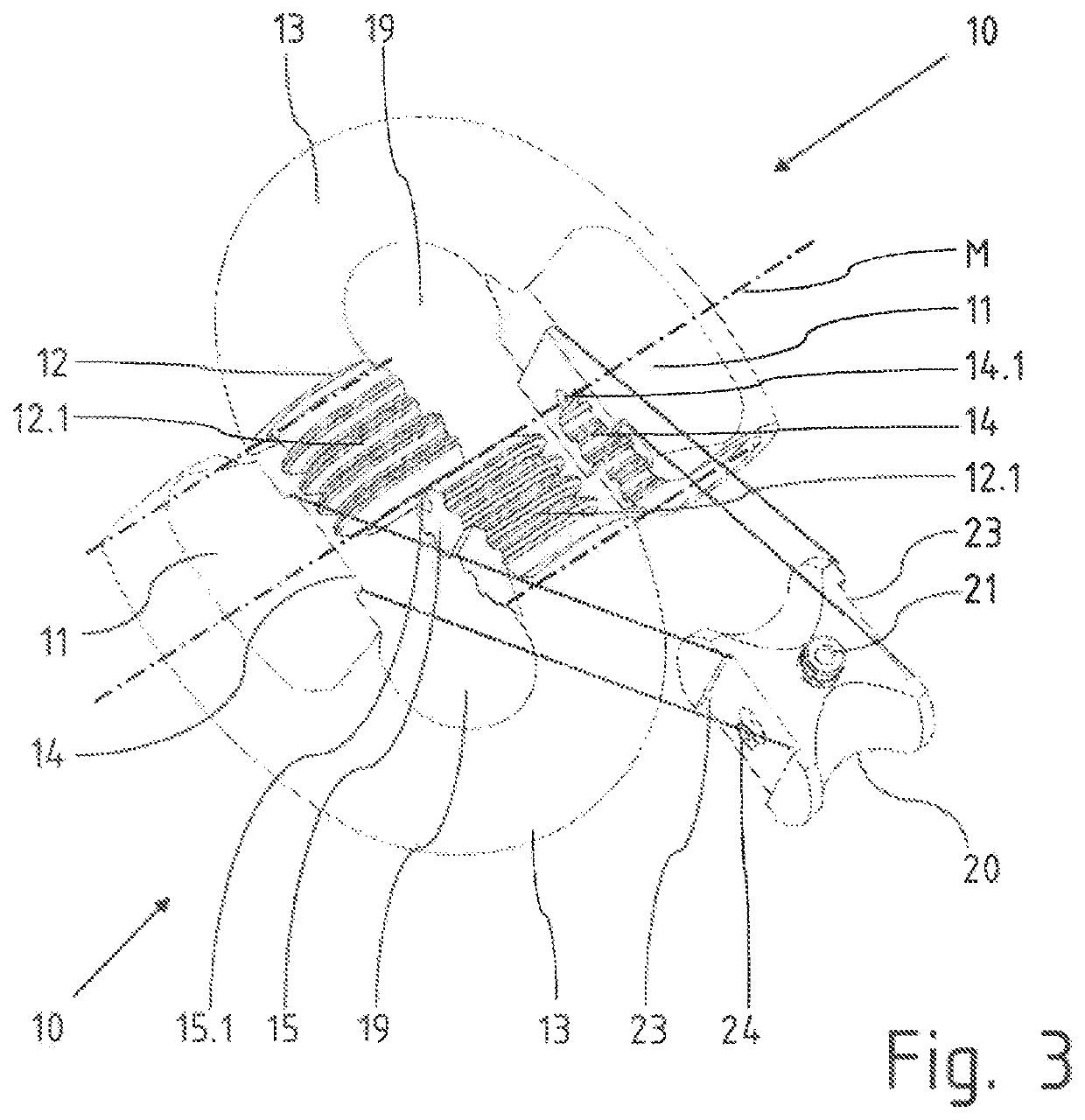Kenter shackle
a kenter shackle and shackle technology, applied in the direction of shackles, hauling chains, chain elements, etc., can solve the problems of high notch stress in the transition, inability to strengthen the weakened areas, and the half-chain elements are undamaged
- Summary
- Abstract
- Description
- Claims
- Application Information
AI Technical Summary
Benefits of technology
Problems solved by technology
Method used
Image
Examples
Embodiment Construction
[0019]The preferred embodiments of the present invention will now be described with reference to FIGS. 1-5 of the drawings. Identical elements in the various figures are designated with the same reference numerals.
[0020]FIG. 1 shows a single half element 10 for a Kenter shackle in side view. The half element 10 essentially consists of a short leg 12 and a long leg 11, whereby the legs 11, 12 are connected to each other by a bent clasp 13.
[0021]As the side view in FIG. 1 further shows, the short leg 12 has an external toothing 12.1. An internal toothing 16.1 begins on the opposite long leg 11 at the level of the lower end of the short leg 12, which is formed in a hollow space 16 on the long leg 11. The transverse dashed-dotted line marks the center plane M and indicates the distinction between the cavity 16 with internal toothing 16.1 and a cavity 17 formed above the toothing area 16.1. Protrusions 14, 15 are visible on the sides of the legs 11, 12 pointing towards each other, whereb...
PUM
 Login to View More
Login to View More Abstract
Description
Claims
Application Information
 Login to View More
Login to View More - R&D
- Intellectual Property
- Life Sciences
- Materials
- Tech Scout
- Unparalleled Data Quality
- Higher Quality Content
- 60% Fewer Hallucinations
Browse by: Latest US Patents, China's latest patents, Technical Efficacy Thesaurus, Application Domain, Technology Topic, Popular Technical Reports.
© 2025 PatSnap. All rights reserved.Legal|Privacy policy|Modern Slavery Act Transparency Statement|Sitemap|About US| Contact US: help@patsnap.com



